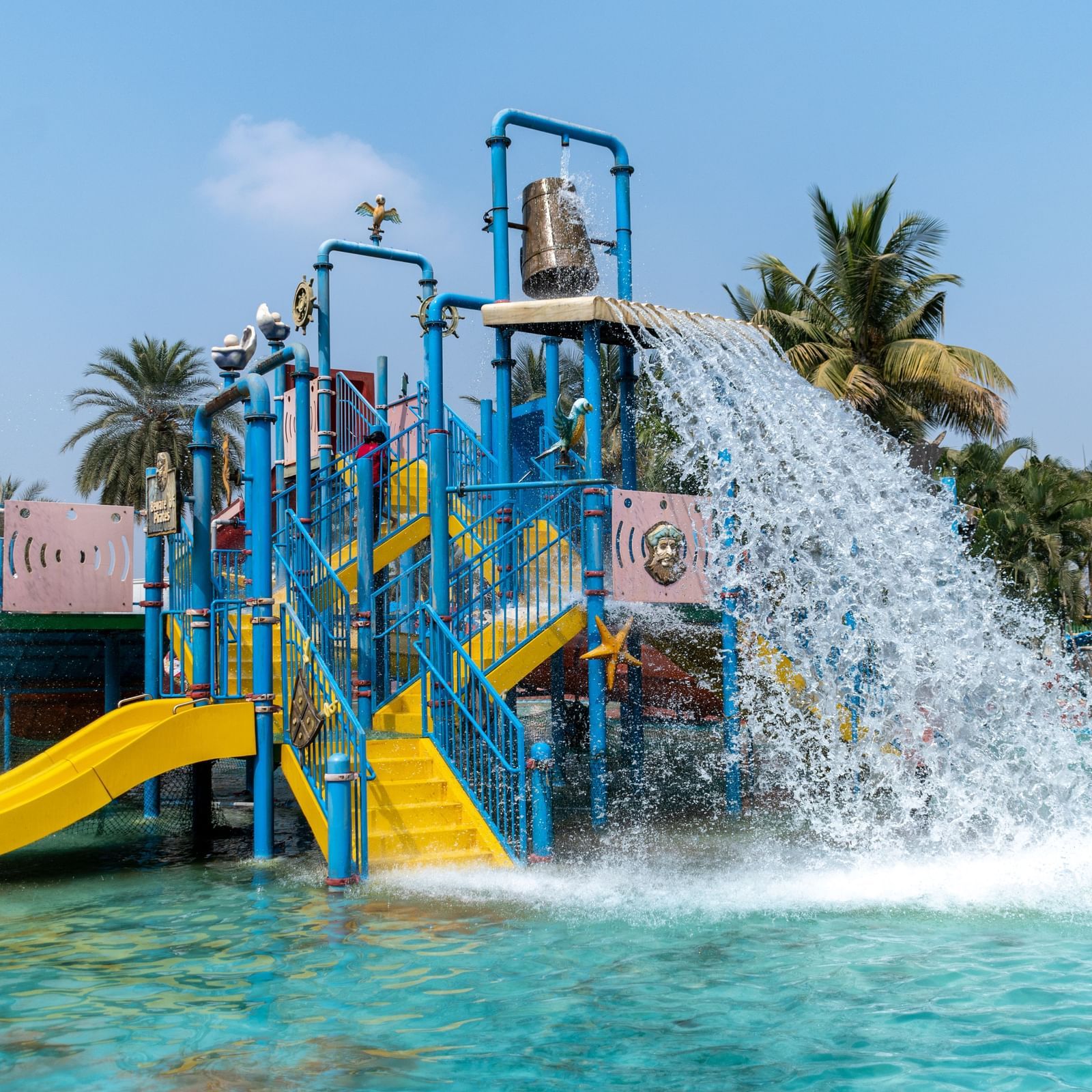- Best Place for Photoshoot in Pune
- Night Camping in Pune
- Best Weekend Getaway, Pune
- Famous Places in Pune
- Must-visit Places in Pune
- Places to Visit near Pune
- Best Place to Visit in Pune with Kids
- One Day Trip in Pune City
- Staycation in Pune
- Summer in Pune
- Fun Things to Do in Pune
- Best Places to Visit with Friends in Pune
- Things to Do in Pune
- Family Fun Park Pune
- Birthday Celebration in Pune
- Events in Pune in December
- EGN Awards
- Corporate Outings in Pune
- Picnic Spots in Pune
- Eldrok Award
- Primary School Maharashtra Leagues
- Children's Day
- Christmas Carnival
- Corporate Social Responsibility
- New Year Celebration
- Republic Day Dhamaka Offer
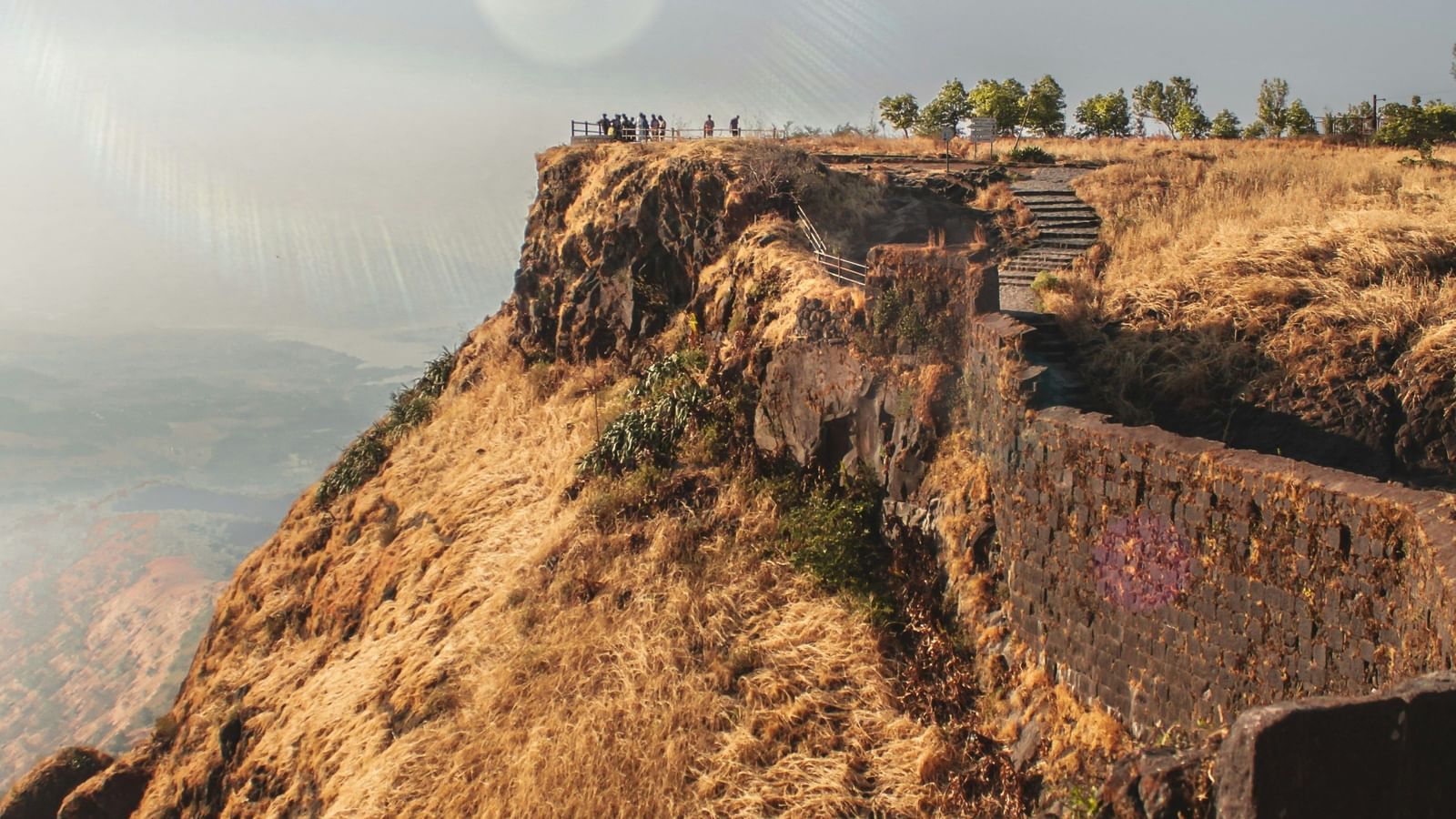
Explore the Top Tourist Attractions in Pune and Beyond
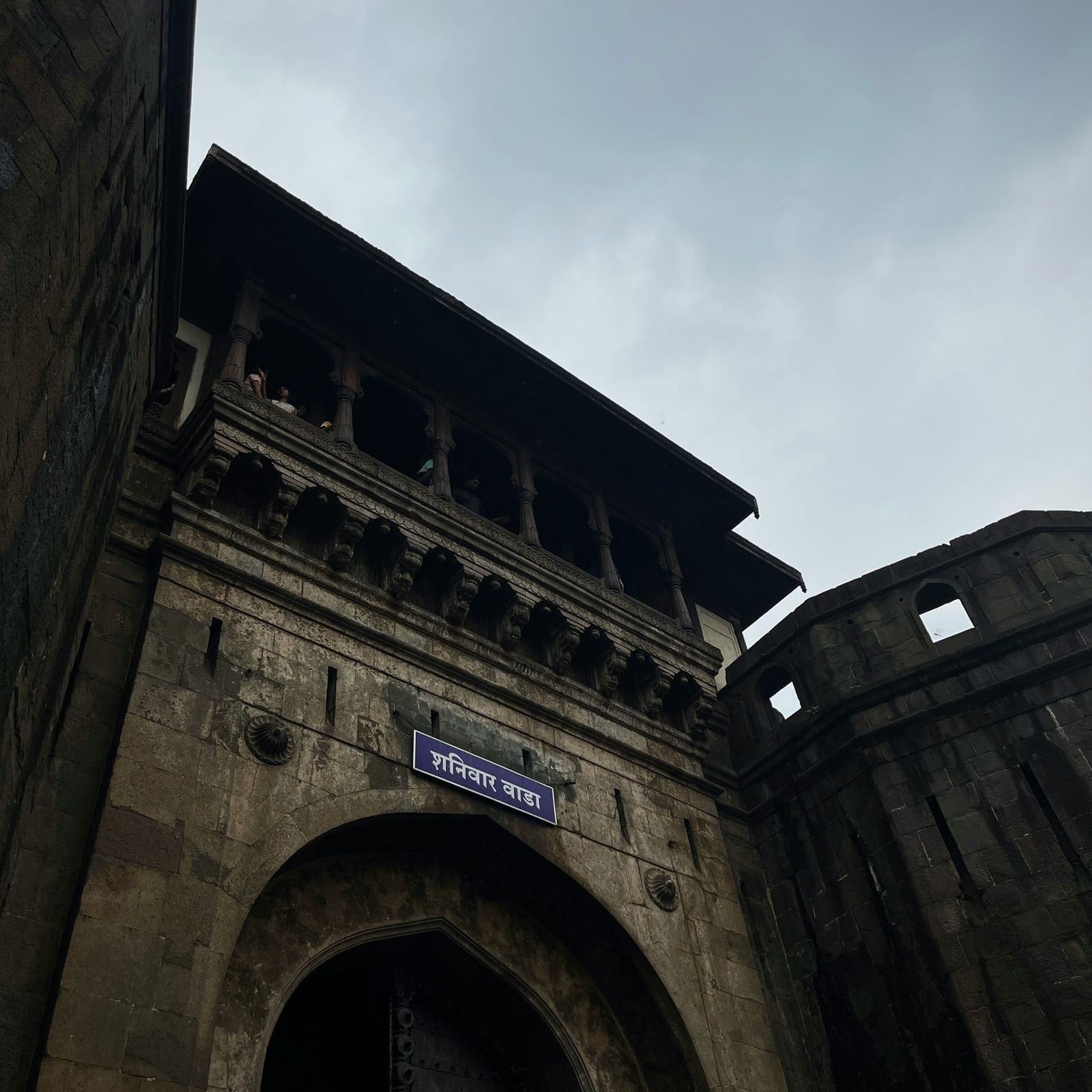
Explore the Best of Pune
1. Fort of Valour: Sinhagad
Perched on the Bhuleswar cliffs, Sinhagad Fort rises 760 m above Pune, guarded by steep slopes and historic gates. Views of Rajgad, Purandar, and Torna unfold from its ramparts, while memorials to Tanaji Malusare, a temple to Goddess Kali, stables, and a Hanuman statue echo the fort’s legacy of Maratha bravery and devotion. Walking its ancient walls, visitors can feel the echoes of legendary battles and heroic tales come alive.
2. A Kaleidoscope of Blooms
After exploring the heights of Sinhagad Fort, nature takes the spotlight at Kaas Plateau, just about 25 kilometres from Satara. Rising gracefully in the Western Ghats, this volcanic plateau bursts into a riot of colours every monsoon, earning its title as Maharashtra’s 'Valley of Flowers'. Over 850 species of blooms, from delicate orchids and Karvy shrubs to the carnivorous Drosera Indica, dance under the flutter of endemic butterflies. The plateau’s thin, basaltic soil shapes a landscape both rugged and breathtaking, revealing rare plants like Cynotis tuberosa, Murdannia lanuginosa, and the striking Ceropegia vincifolia (Kandilpushpa). A UNESCO World Heritage Site, Kaas offers a fleeting, magical spectacle each August to October, where every step feels like wandering through a living, vibrant canvas.
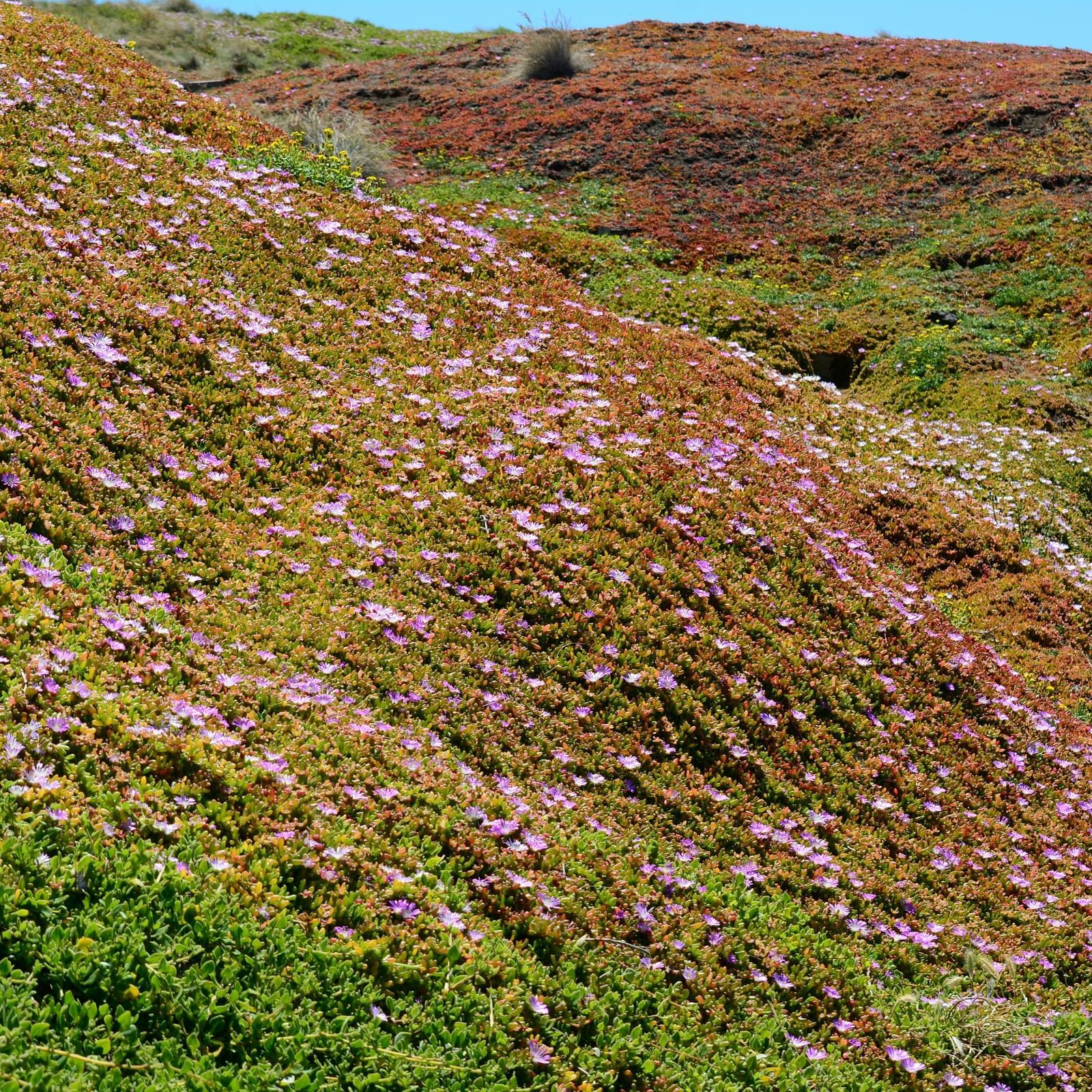
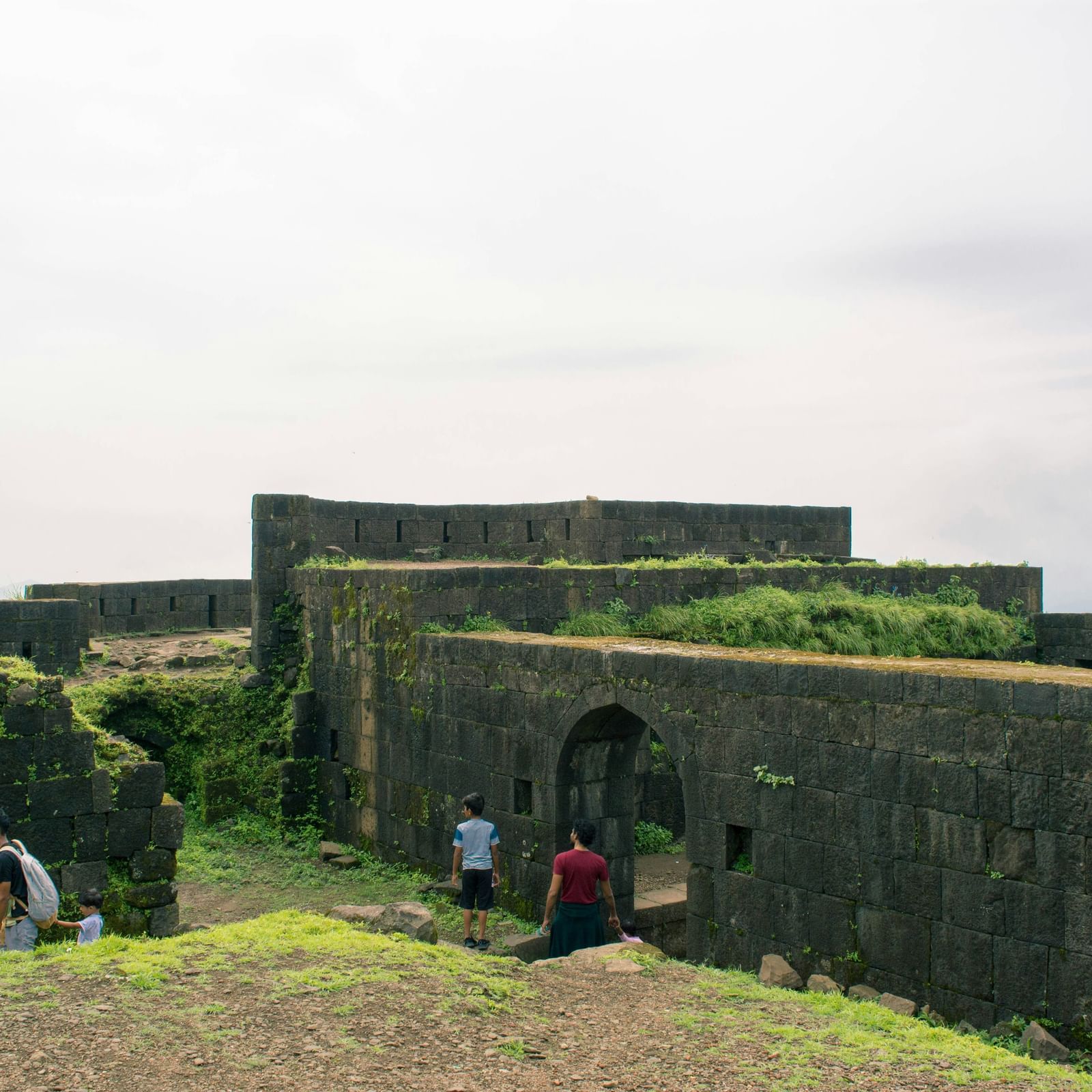
3. History Etched in Stone
From the floral magic of Kaas Plateau, the journey turns to history at Lohagad Fort, a majestic sentinel near Lonavala. Built by the 10th-century Lohtamia dynasty, the fort has seen Satavahanas, Chalukyas, Rashtrakutas, Yadavas, Bahamanis, Nizams, Mughals, and Marathas pass through its gates. Chhatrapati Shivaji Maharaj captured it in 1648 AD, reclaimed it in 1670 AD to safeguard treasures from Surat, and during the Peshwa era, Nana Phadnavis added structures like a tank and step-well. Hidden caves on its southern cliffs reveal a Jain inscription in Brahmi script, dating back to the 2nd or 1st century BC, offering a fascinating glimpse into Lohagad’s ancient past.
4. The Ghats’ Hidden Waterway
From the historic heights of Lohagad Fort, the journey descends into the lush embrace of the Western Ghats at Tamhini Ghat, a scenic mountain passage between Mulshi and Tamhini. Stretching about 15 km, this ghat cuts through dense forests, gushing streams, and impromptu waterfalls that spring to life during the monsoon, transforming the landscape into a green, velvety paradise. The road linking Mulshi to Tamhini was created to ease travel to the Konkan coast, but today it draws travellers seeking nature’s spectacle. From moss-covered trails to the serene backwaters of Mulshi Dam and cascading waterfalls like Palse, every turn offers a postcard-perfect view. The region also opens doors to adventure, with river rafting gaining popularity on the Kundalika River, making Tamhini Ghat a seamless blend of tranquillity, thrill, and monsoon magic.
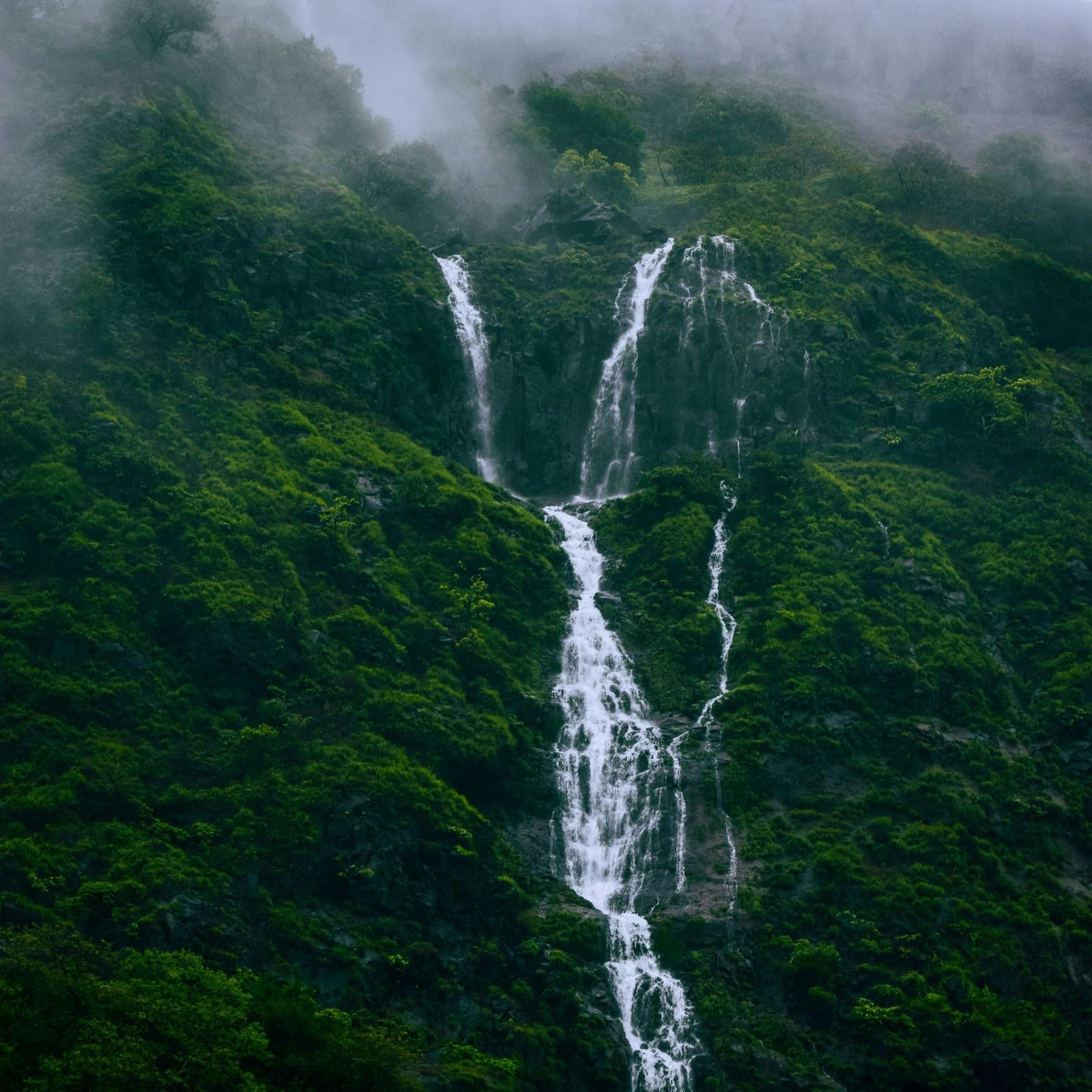
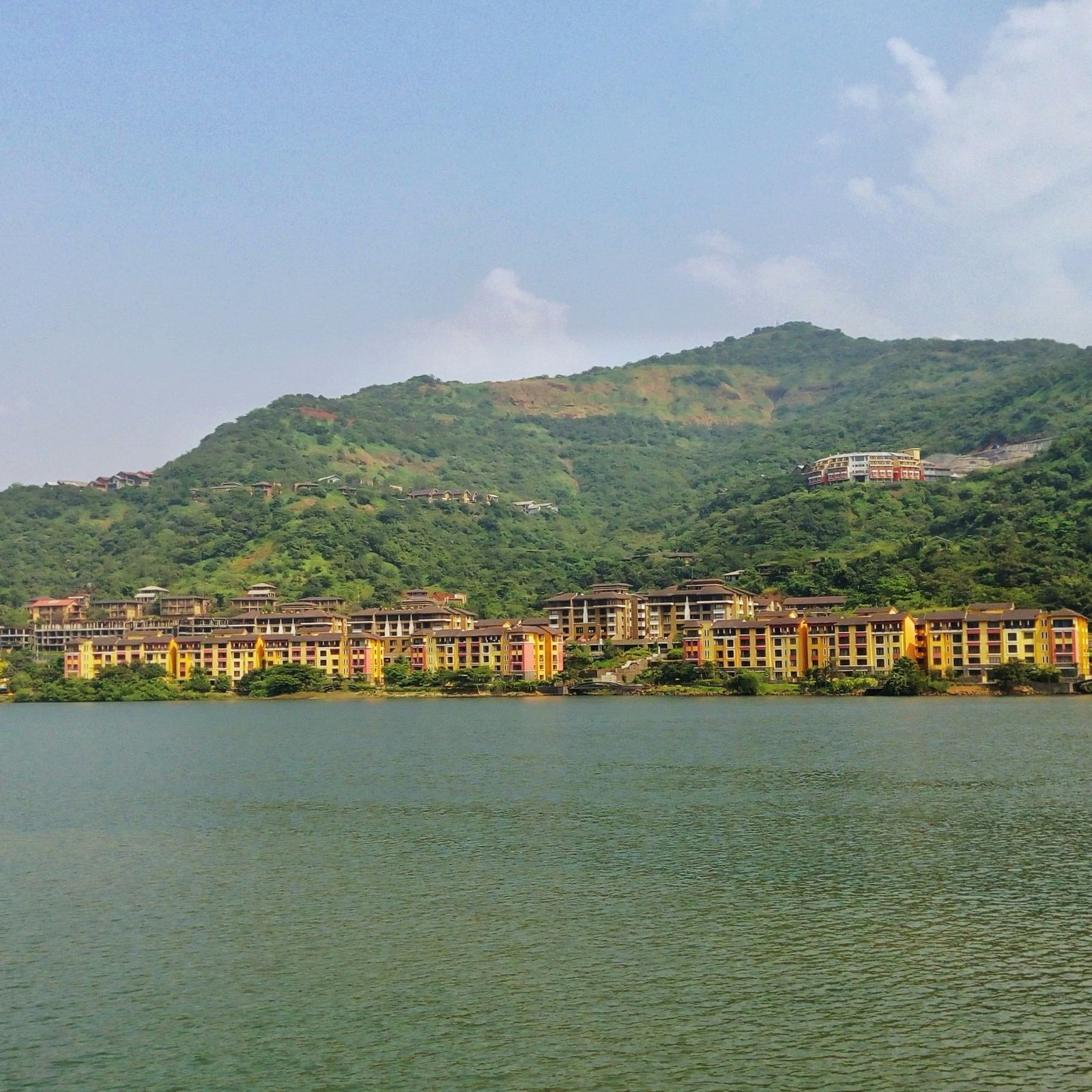
5. Lavasa: Where Hills Tell a Story
From the cascading waterfalls of Tamhini Ghat, the journey ascends to the modern charm of Lavasa, a private, Portofino-inspired lakeside hill city just about 57 km from Pune. Spread across expansive hills, Lavasa blends European-style streets and buildings with India’s scenic Western Ghats backdrop, offering opportunities for boating, picturesque walks, and a unique contrast to the natural landscapes explored earlier. Conceived in 2006 as India’s first post-independence hill station, the city has been ambitious in scale, though its construction has faced environmental and regulatory challenges over the years. Despite controversies, Lavasa today stands as a distinctive destination where architecture, hills, and leisure converge, giving travellers a taste of European-style sophistication amidst Maharashtra’s natural splendour.
6. A Wild Retreat Near Pune
Leaving behind the European-style streets of Lavasa, the journey delves into the wild at Mayureshwar Wildlife Sanctuary, a nature lover’s retreat just about 65 km from Pune. Declared a sanctuary in 1919, it sprawls across dry deciduous scrub forests and interspersed grasslands, home to flora like Khair, Sisoo, Ber, Karwand, and a staggering 938 species of flowering plants. Birdwatchers will delight in spotting Indian rollers, black-winged kites, blue-cheeked bee-eaters, and winter visitors such as European Rollers and Montagu’s harriers. Among its mammal residents are Indian Gazelle (Chinkara), Striped Hyena, Indian Grey Wolf, Jackals, Foxes, and Hares. With the freedom to drive or walk through the sanctuary and accommodation options nearby in Supe or Hadapsar, Mayureshwar offers travellers gallery-worthy landscapes, wildlife encounters, and the serenity of nature at its best.
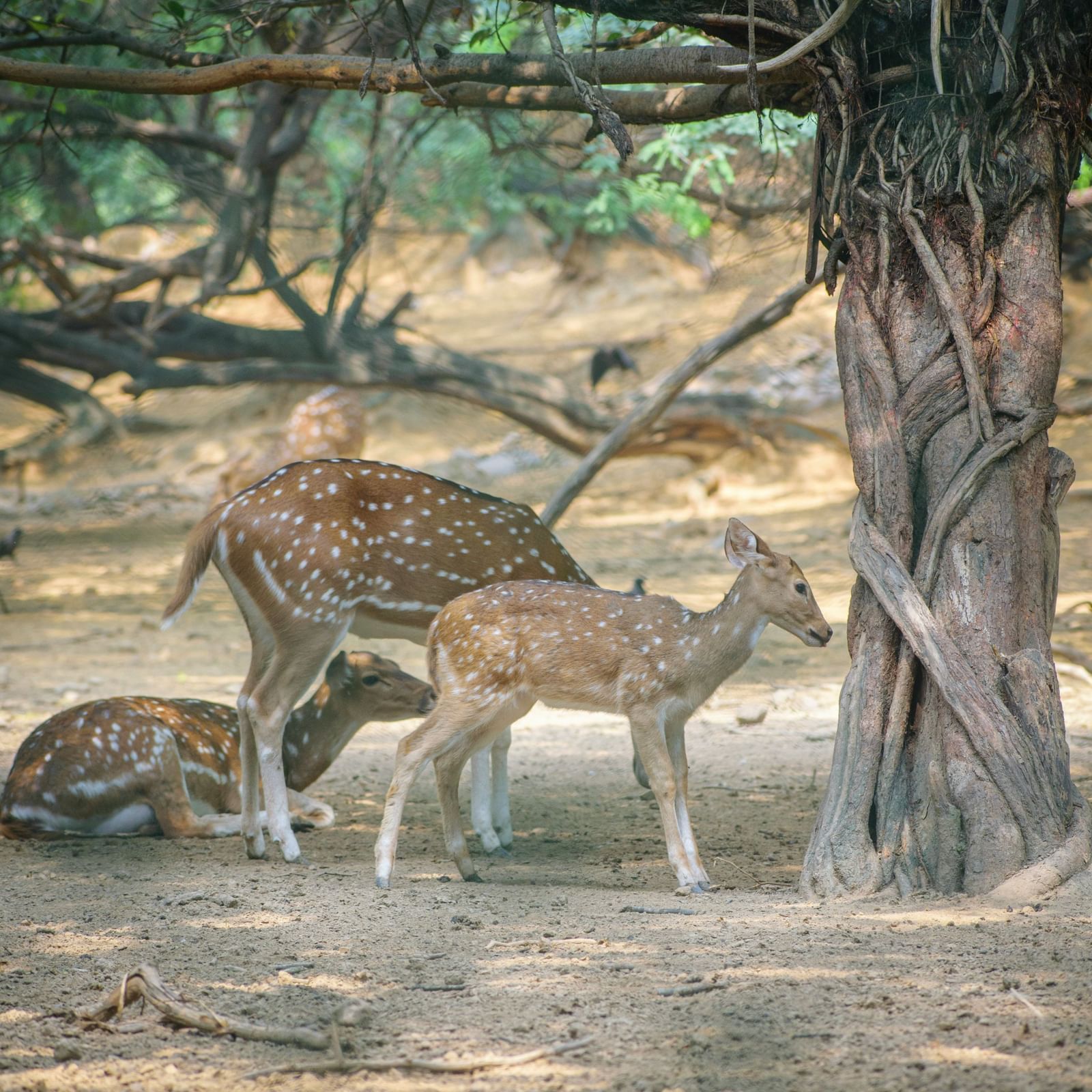
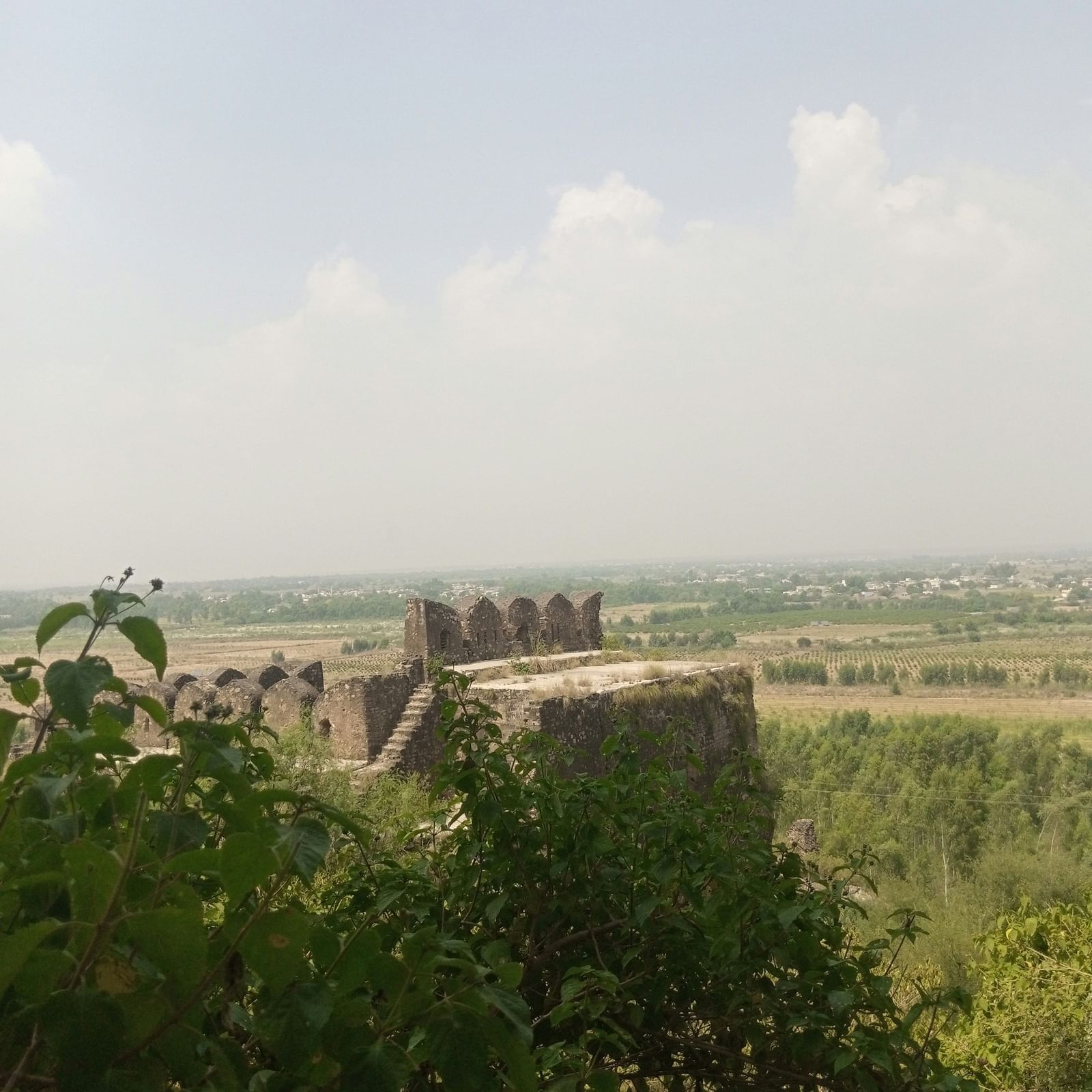
7. Raireshwar Fort: Hills of History
Amid the wild expanse of Mayureshwar Sanctuary rises the historic Raireshwar Fort, about 82 km from Pune, standing tall among rolling hills and neighbouring forts like Kenjalgad. The fort is famed not only for its strategic role during the Maratha Empire but also for its seven-coloured soil, a geological wonder that has intrigued scientists for centuries. Atop the plateau sits the ancient Raireshwar Temple, rebuilt in the 18th century, surrounded by vibrant flowers that bloom spectacularly during the monsoon. This sacred site holds a pivotal place in Maratha history: it was here that Chhatrapati Shivaji Maharaj took the oath to establish Hindavi Swarajya in 1645, alongside his loyal Mavalas, igniting a new era. Today, Raireshwar blends natural beauty, historical significance, and spiritual resonance, making it a must-visit for history enthusiasts and trekkers alike.
Trails and Forts Around Pune
Pune and its surroundings are a treasure trove of history, adventure, and natural beauty. Start with the region’s famed hill forts, where history and trekking blend seamlessly. Sinhagad Fort, about 30 km from the city, perches on the Bhuleswar range, offering sweeping panoramic views and memorials of Maratha heroes Tanaji Malusare and Rajaram I. Not far from here, Lohagad Fort, near Lonavala and rising 1,033 m above sea level, connects to Visapur Fort via a scenic ridge. With a history spanning the Lohtamia dynasty, Mughals, and Marathas, Lohagad was used by Chhatrapati Shivaji Maharaj to safeguard his treasury. Rajgad Fort, roughly 60 km southwest of Pune, served as Shivaji’s first capital; its palaces, water cisterns, and caves standing witness to many historic events. Other forts such as Torna and Purandar also offer rewarding treks steeped in Maratha history, making them some of the most captivating tourist attractions in Pune.

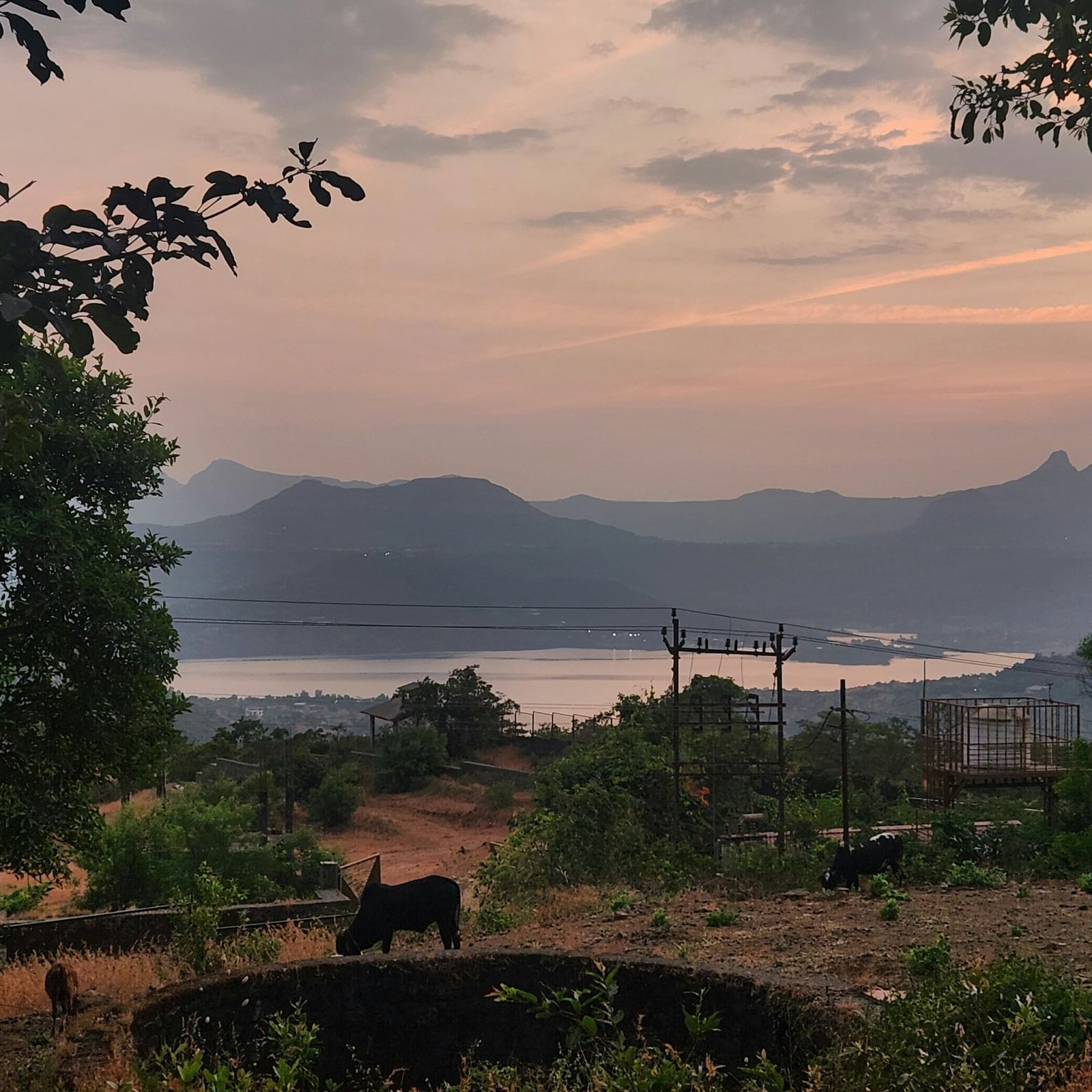
For those drawn to nature, the Kaas Plateau, a UNESCO World Natural Heritage site about 135–140 km away, transforms into a ‘valley of flowers’ during the monsoon, showcasing over 850 species of flowering plants, including orchids and endemic shrubs. Lakeside and highland retreats such as Pawna Lake, Kolad, Malshej Ghat, Mahabaleshwar, Lavasa, Kamshet, and Bhimashankar provide serene escapes with waterfalls, paragliding, and camping. Pawna Lake, just 58 km from Pune, stands out for lakeside camping experiences featuring tent stays, barbecues, live guitar music on select evenings, and campfires, offering the perfect balance of adventure and relaxation.
Gateway to Adventure
Centrally located just minutes from Pune, Diamond Parks provides easy access to some of the most popular tourist places around Pune, from historic forts and scenic treks to lakes and hill stations. The resort itself is a full-scope leisure hub, offering thrilling water park rides, immersive camping experiences, and a variety of dining and bar options to recharge after a day of exploration. With its perfect mix of adventure, comfort, and convenience, Diamond Parks ensures every stay is memorable.
